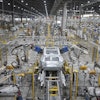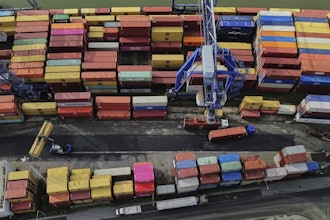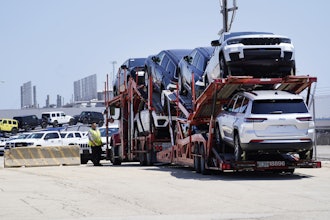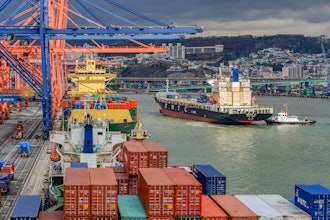
The manufacturing industry has been hit hard by the pandemic. From supply chain crises to surging commodity prices, organizations have had to revaluate their strategies and business systems to adopt more responsive models. Here we discuss manufacturing's outlook for 2022, and six tech investments that can ensure resiliency for years to come.
1: More Than Half of Manufacturing Firms Will Adopt Single Instance Cloud Systems
Software and applications are developing and improving at a rapid rate, but so is the threat of malicious attacks. Organizations must constantly maintain and update their security. Naturally manufacturers want the latest features and enhancements to stay competitive, but with so many software platforms involved in running the business, this is complex, labor intensive and costly – making it difficult to adhere to a ‘Best of Breed’ approach to business systems.
Manufacturers should look for providers and partners who can offer a solution for all their business processes in one place, with security updates and innovation embedded into the core product. Having users in one database simplifies control of permissions and access. Improved system security is one of the main advantages of cloud computing.
2: Two-Fifths Will Integrate Operational Data into Critical Systems
Manufacturers know that their production machines and systems generate vast quantities of data. But creating a “single source of the truth”, so they can access, interpret, and make informed business decisions, remains a serious challenge. Working with solution providers who can help join up the disparate systems will be key.
Next year more manufacturers will be linking manufacturing machines and connected tools into their business systems, so they’ll be able analyze the data within their software. This will give parts of the business access to machine data that they couldn’t see before. Robot orders increasing 67 percent in Q2 2021 is an indication that connectivity to productions machines is high on manufacturers’ agenda.
3: Half Will Abandon JIT Models
Manufacturers who relied on single-sourced raw materials have been forced to change their business models to cope and remain in business. If they’re working to Just in Time (JIT), they’ll have to consider buffering inventory to cover erratic supply. This must be done carefully as the size of the buffer needs to move with forecast and demand, to minimize the impact on cashflow where margins are tight.
The use of safety stocks and reorder point planning are currently not flexible enough to cope, so manufacturers will need more advanced calculations based on predicted demand and proven capacity.
4: Four out of Five Will Minimize Reliance on Long-Haul Shipping
The once fast, efficient, reliable and cheap shipping network (accounting for 90 percent of global trade, 70 percent of it in containers) was thrown into disarray in 2021. This led to “container-geddon” pushing freight rates to a record high and prompting some exporters to raise prices or simply cancel shipments altogether.
In 2022 manufacturers will look for greater diversity and flexibility in supplier partnerships, as well as where, and perhaps more importantly, how they source materials, goods, and services. For example, setting up new clusters of national and regional production, also known as “proximity sourcing”.
Technology and automation will also play a big part. In some cases, additive manufacturing (AM) will help gain independence from China and therefore long-haul container shipping. During the pandemic, AM has already started filling some of the supply chain gaps globally.
In fact, the ease at which 3D printers can switch from producing one component or product to producing something completely different makes it easy for manufacturers to address at least a portion of their supply chain bottlenecks. But hardware and material innovation have outpaced software development, so software will have to catch up if it’s to appeal to a wider range of manufacturers. In essence, we will see a shift towards shortening supply chains to counteract container-geddon.
5: Carbon Emissions will Take Priority - 60 Percent Will Improve Data Transparency
2022 will be the year of decarbonization, and sustainability will gain a new sense of urgency. Regulatory pressures, customers’ demands, investors and other stakeholders have forced sustainability to the top of business priorities and made it an operating principle going forward. Governments and the financial community are making significant investments into combatting climate change.
To meet these requirements, data will be paramount. Manufacturers will require access to more accurate, detailed, and timely data, not only looking at organization-level emissions, but also granular emissions associated with manufacturing processes, the transport of raw materials and product, and the usage and disposal of products as they come to their end of life.
One thing is for sure, sustainability will require measurability, both up and downstream, and manufacturers will need to leverage technology strategically, to not only drive end-to-end data transparency, but also report on it when needed.
6: Data Will Enable 70 Percent to Improve Forecasting and Durability
Some manufacturers think that 2020 and 2021 data is too skewed to be of much use in 2022. If they struggled during that period, they might consider ignoring it and argue that it was simply too “random” to include. Conversely, if they saw orders skyrocket (as in food & beverage) they may choose to disregard the unusual data patterns, so they don’t produce overly optimistic, and therefore unreliable forecasts for the upcoming 18 to 24 months.
Both courses of action would be a mistake.
Previous supply chain disruption were much more localized, lasted a relatively short amount of time, mostly impacting supply, not demand. COVID-19 however has been a truly global event, affecting demand as well as supply. There’s still an opportunity for manufacturers to learn from COVID's past and ongoing impact in preparation for the next disruptive event, which could be just as unforecastable and sudden.
This means using these past data patterns and predictive analytics to run what-if scenarios, analysis of comparable events and simulations to help quantify the likely impact of a potential event on company revenue, overall performance, and the wider supply chain. This will allow manufacturers to focus on the business impact (across regions, channels, and customer profiles) rather than the event itself. Bringing in machine learning can help improve forecasting and minimize human error.
While manufacturing is by no means out of the woods yet, the outlook for 2022 is bright. Digital technology is set to enable manufacturers to take the necessary steps to bolster resilience and flexibility, forming quick-response systems in potential times of crisis. These movements will not only help to future-proof the industry against any further disruption and uncertainty, but will also facilitate development in the years to come.
Maggie Slowik is the Industry Director for Manufacturing at IFS.






















